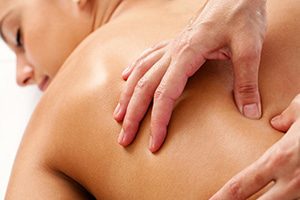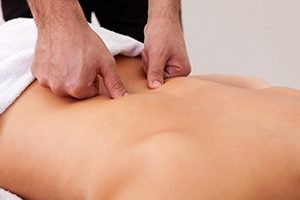Massage includes a broad range of manual techniques involving the application of pressure to skin and muscle.
It is an enormously popular and widespread form of holistic treatment: almost every country in the world has a long-standing tradition of massage or other form of treatment using the hands. It is almost unique in that it’s thought of as both luxury and medicine in many different countries and cultures, and by people from all social backgrounds.
The deep tissue massage offered in my Notting Hill Studio is a combination of techniques tailored to each individual client.
Oil or cream is often used to aid skin glide and to minimize skin irritation. In most cases however, osteopathic practitioners tend not to use oil or cream as it can limit how much information about the underlying tissues the practitioner can feel through the hands. Oil also makes manipulation of the joints very difficult.
Proven Benefits of Massage

Massage has many health benefits including the increase of fluid dynamics in the tissues, which helps clear waste chemicals that build up in the muscle. It also helps promote a good blood supply essential for the transport of nutrients and oxygen to the local tissues. It can help break down adhesions or scarring in the connective tissue and stretch shortened tissues.
The neurological effects of massage help normalise nerve impulses that control muscle tension and pain. Studies have proven that the nerves that supply a specific muscle are less excitable following massage. This effect is not seen in muscles that have not been massaged.
The psychological and emotional benefits of touch make it a pleasurable, soothing and reassuring experience. Studies have demonstrated its effectiveness in reducing pain, anxiety and depression. Research has also shown that massage can temporarily lower both blood pressure and heart rate. In addition, there is evidence it helps improve digestive disorders by decreasing arousal of the sympathetic nervous system that mediates the “fight or flight” response.
Top surgeons recommend massage above other forms of physical therapy for complex and hard to treat conditions like frozen shoulder; Acupucture and Kinesio Taping work very with this technique and are all available in our Holistic Studio in Notting Hill.
Massage Techniques Used in our Notting Hill Studio
Massage techniques vary and include sports massage, Thai massage, Chinese massage and Swedish massage.
Sports massage aims to increase athletic performance as well as aid recovery from overuse or injury. It shares all of the elements of regular massage, but is usually applied with more force to get deeper into the muscle and connective tissue. This extra force is necessary to deal with the type of muscle tension, tightness and metabolic build up seen in both amateur and professional athletes.
Thai massage includes many of the traditional strokes, together with some dynamic stretches where the practitioner uses the patient’s limbs as a lever. It has the added benefit of mobilising the joints.

Chinese massage involves applying pressure and pinching techniques to the acupressure points.
Swedish massage (or traditional massage) is comprised of 5 basic strokes:
- Effleurage is a gentle introductory stroke that aims to aid fluid clearance and reduce swelling. The stroke is applied towards the heart to aid venous return.
- Petrisage is a kneading stroke that works more deeply into bound and tight muscles.
- Digital Friction is a strong fast stroke applied with greater force. It generates heat and breaks down adhesions and scar tissue.
- Tapotement is a percussive stroke that involves drumming the patient’s muscles with fingers or loose fists to invigorate the muscles and promote better circulation.
- Vibration is applied using oscillatory movement to help release stored tension held in the patient’s body.
Osteopathic soft tissue techniques utilise some of the traditional methods. They also include cross fibre stretching and longitudinal stretching. The aim is to elongate and separate the muscle fibres and to mobilise any tightness held in the connective tissue in the muscle.
Massage in History

There are records of massage having been used in many ancient cultures including those of China, India and Egypt. It is deeply rooted in early medicine across several continents. The Greek physician Hippocrates emphasised the importance of rubbing as an essential element of the art and science of medicine.
Massage is a central component of both the Indian Ayurvedic Medical System and Traditional Chinese Medicine. It is not a coincidence that these ancient cultures independently discovered the value and healing properties of touch.
